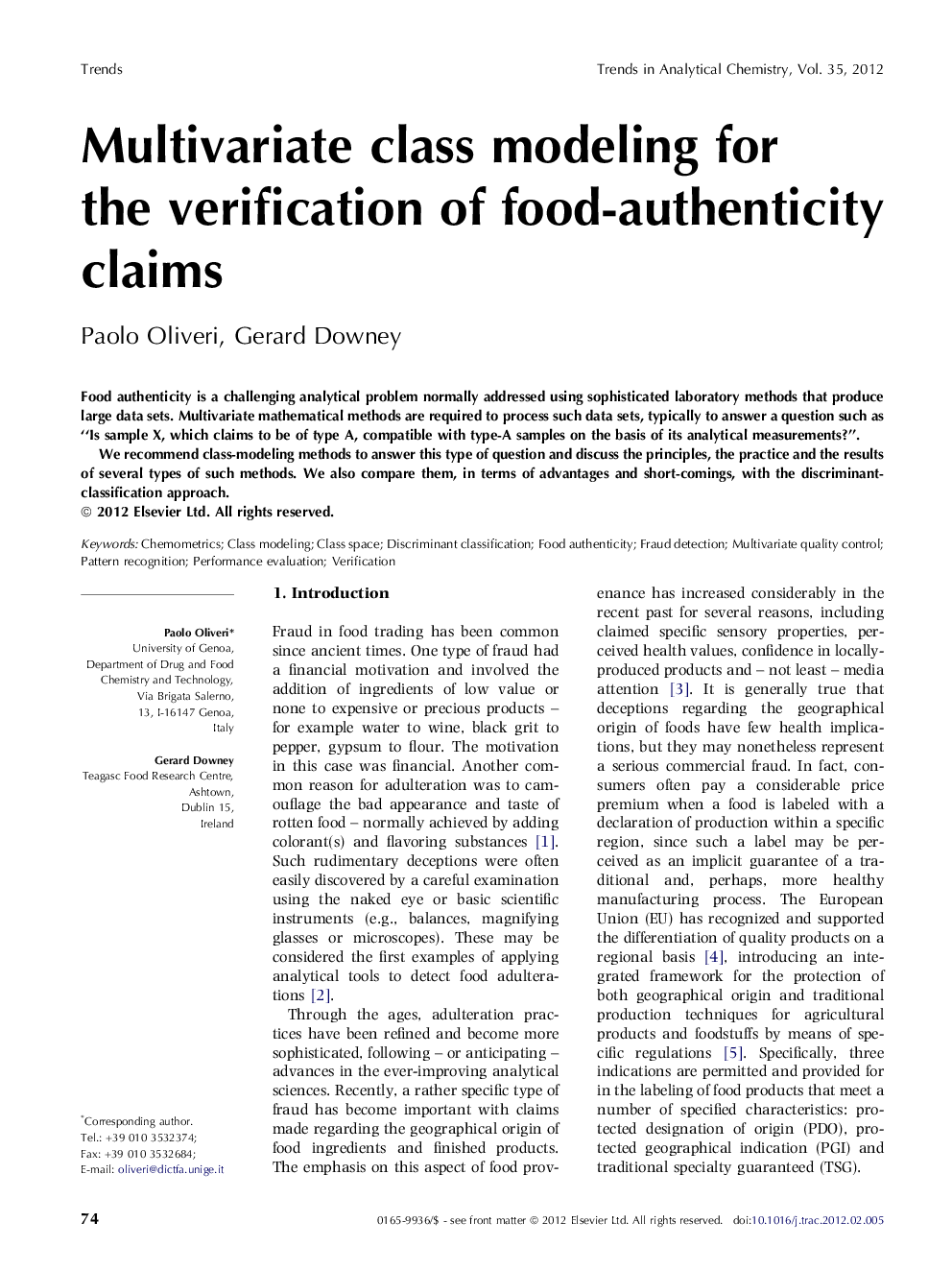| Article ID | Journal | Published Year | Pages | File Type |
|---|---|---|---|---|
| 1248577 | TrAC Trends in Analytical Chemistry | 2012 | 13 Pages |
Food authenticity is a challenging analytical problem normally addressed using sophisticated laboratory methods that produce large data sets. Multivariate mathematical methods are required to process such data sets, typically to answer a question such as “Is sample X, which claims to be of type A, compatible with type-A samples on the basis of its analytical measurements?”.We recommend class-modeling methods to answer this type of question and discuss the principles, the practice and the results of several types of such methods. We also compare them, in terms of advantages and short-comings, with the discriminant-classification approach.
► Verification of food-authenticity claims is a challenging analytical problem. ► The issue is generally the same as for multivariate quality control. ► Appropriate chemometric methods are required to process data. ► Discriminant-classification methods often provide an oversimplified approach. ► Class modeling is the most suitable approach for real situations in food control.
